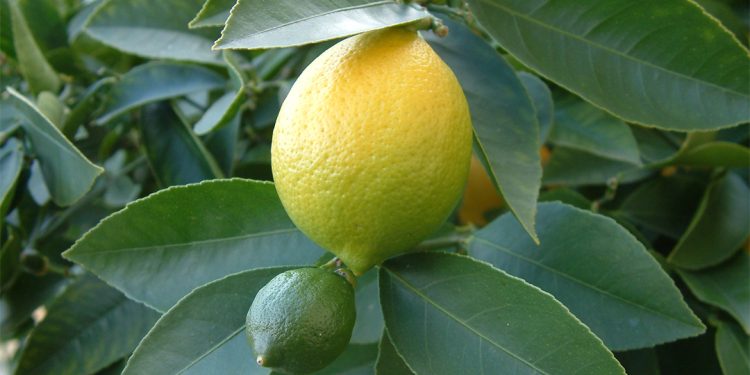A small evergreen tree, 2-6 m (6-19 ft.) tall, with light-green, oval leaves and thorny stems. Clusters of white flowers, opening from pink-tinted buds, are followed by ovoid, bitter-tasting yellow fruits.
History and traditions
The citrus species were unknown to Greek and Roman writers, but they have been cultivated for so long that their origins are hazy. Lemons are probably natives of northern India, certainly China, and are thought to have been brought to the West by Arab traders via North Africa, Arabia and Syria, thence to Spain and Sicily. C. limon, found in the valleys of Kumaon and Sikkim, in the foothills of the Himalayas, has the Hindustani name limu or nimbu, which was taken into Arabic as limun.
Growth
Lemon trees are tender, and must be protected from frost, but they prefer cool rather than hot conditions. If grown in northern climates, with cold, frosty winters, they should be kept outside in summer and in a temperate conservatory or greenhouse in winter. They need a well-drained, not too acid compost the correct pH value is crucial, 6-6.5 for lemons. C. limon may be grown from seed, or from semi-ripe cuttings but cultivars do not come true from seed.
Uses
Medicinal Rich in vitamin C and once used by British seamen to prevent scurvy (limes were also used). Lemons have anti-inflammatory properties and are used in home remedies for colds, frequently in conjunction with honey, which is antiseptic. Applied externally for insect bites and skin irritations.
Culinary
The juice and rind are widely used as a flavoring in cooking, and in soft drinks, sauces, pickles, preserves and marinades. Aromatic The peel is dried for pot-pourri and home fragrance preparations. The oil is used commercially in perfumery, and to scent soaps and household cleaning products.










